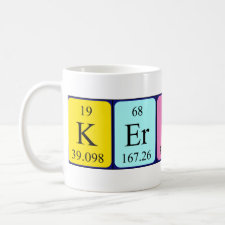
Authors: Golker K, Karlsson BCG, Rosengren AM, Nicholls IA
Article Title: A Functional Monomer Is Not Enough: Principal Component Analysis of the Influence of Template Complexation in Pre-Polymerization Mixtures on Imprinted Polymer Recognition and Morphology.
Publication date: 2014
Journal: International Journal of Molecular Sciences
Volume: 15
Issue: (11)
Page numbers: 20572-20584.
DOI: 10.3390/ijms151120572
Alternative URL: http://www.mdpi.com/1422-0067/15/11/20572
Abstract: In this report, principal component analysis (PCA) has been used to explore the influence of template complexation in the pre-polymerization phase on template molecularly imprinted polymer (MIP) recognition and polymer morphology. A series of 16 bupivacaine MIPs were studied. The ethylene glycol dimethacrylate (EGDMA)-crosslinked polymers had either methacrylic acid (MAA) or methyl methacrylate (MMA) as the functional monomer, and the stoichiometry between template, functional monomer and crosslinker was varied. The polymers were characterized using radioligand equilibrium binding experiments, gas sorption measurements, swelling studies and data extracted from molecular dynamics (MD) simulations of all-component pre-polymerization mixtures. The molar fraction of the functional monomer in the MAA-polymers contributed to describing both the binding, surface area and pore volume. Interestingly, weak positive correlations between the swelling behavior and the rebinding characteristics of the MAA-MIPs were exposed. Polymers prepared with MMA as a functional monomer and a polymer prepared with only EGDMA were found to share the same characteristics, such as poor rebinding capacities, as well as similar surface area and pore volume, independent of the molar fraction MMA used in synthesis. The use of PCA for interpreting relationships between MD-derived descriptions of events in the pre-polymerization mixture, recognition properties and morphologies of the corresponding polymers illustrates the potential of PCA as a tool for better understanding these complex materials and for their rational design.
Template and target information: bupivicaine
Author keywords: molecularly imprinted polymer, Molecular dynamics, molecular recognition, molecular imprinting, Principal component analysis, chemometrics



Join the Society for Molecular Imprinting

New items RSS feed
Sign-up for e-mail updates:
Choose between receiving an occasional newsletter or more frequent e-mail alerts.
Click here to go to the sign-up page.
Is your name elemental or peptidic? Enter your name and find out by clicking either of the buttons below!
Other products you may like:
 MIPdatabase
MIPdatabase









